Enab Baladi— Ali Darwish| Nour al-Deen Ramadan
In March 2019, the Syrian Democratic Forces (SDF), backed by the U.S.-led coalition, celebrated its victory over the Islamic State (IS) in its last stronghold in Syria.
Before IS was stripped of this final territory, the former Iraqi Prime Minister, Haider al-Abadi, declared complete control over the border strip with Syria. It was in December 2017 that he announced the end of the war against IS in Iraq.
IS, however, was not absolutely terminated, as it continued to launch attacks in Iraq and Syria, against all military forces in both countries.
In Syria, the Syrian Democratic Forces (SDF), Iran-affiliated Militias, and Russia-backed groups, including the Palestinian al-Quds Brigade and the 5th Corps, are ramping up action against IS, which operation scope has been limited to the Syrian desert (Badia), except for its sleeper cells that spread across other areas.
IS intensified its military action after its commander Abu Bakr Al-Baghdadi was killed in a U.S. operation in October 2019.
At the onset of 2021, IS’ assaults upsurged. Its fighters targeted regime military convoys and tanks transporting oil from the SDF-held areas. This cost the regime human and material losses and pressed it into mobilizing reinforcements to desert areas to carry on with deterrence efforts, which had been futile so far.
This article draws on interviews with researchers and experts on jihadist groups, who described IS’ brief absence as “strategic hibernation,” after which the group awakened with a new action plan.
Today, IS operates chiefly in Syrian desert territories, summoning to its help sleeper cells to destabilize target areas and ensure that other actors in the conflict are aware of its presence.
In this article, Enab Baladi investigates into the political and social factors that breathed life into IS, as well as the desert terrains it controlled over the course of its latest military operations, turning it into a black hole for opponents.
The situation on the ground, how would it develop in 2021? And what role do the involved military forces play in guiding the flow of events?
Corruption and marginalization: IS returns under SDF’s watchful eye
In Syrian regime and SDF territories, external circumstances surrounding IS have contributed to its powerful return, development, and expansion of its activities’ scope.
Russia’s failure to keep the Syrian desert under control and the Moscow-Tehran absent coordination have both created wide margins for IS’ work in desert areas and Deir ez-Zor, Nawar Shaaban, researcher and chief information officer at Omran for Strategic Studies, told Enab Baladi.
In SDF-held territories, IS exploited the fragile security situation and shored up its presence through the local feuds between the SDF administration and the area’s Arab components, Shaaban added. One indicator of this is that IS attacks take an upward trajectory every time the SDF would embark on a security operation.
In 2020, the SDF launched the two-phase Terrorism Deterrence Operation to capture IS fighters within its control areas. The operation was followed by extensive search operations across the border strip with Iraq. At the time, the SDF arrested a large number of people on charges of affiliation to IS.
The arrests were met by protests on the part of rights organizations, for some were groundless since many of the arrested citizens were not linked to IS by any means. The SDF released these after civilian and tribe dignitaries intervened.
Activists, from the area, have even accused the SDF of launching similar arrest drives every time its relations with the locals tense up. Locals have repeatedly taken to the streets to protest the poor living conditions, corruption, and mandatory conscription, particularly of teachers, medics, and municipality workers.
After similar protests, in July and August 2020, the SDF cordoned al-Uqaydat area, and Thubian, al-Shheel, al-Hawaij, and other villages east of Deir z-Zor, which constitute the so-called Jazira Line.
The SDF imposed a full-time curfew and set up additional checkpoints in these villages, attributing these measures to search operations in al-Shheel and al-Hawaij, which it called “strongholds” of IS sleeper cells.
Several human rights organizations condemned SDF’s abuses, including the Syrian Network for Human Rights (SNHR).
In a September 2019 report, the SNHR accused the SDF of arresting and forcibly disappearing nearly 3000 persons, as well as harassing the civil society organizations in the area.
“The SDF are attempting to legitimize all repression, arbitrary arrest, enforced disappearance, kidnapping with the aim of forced conscription, and other widespread human rights violations in the areas they control under the pretext of fighting terrorism and extremists,” the SNHR stated.
“This tactic,” according to the SNHR, “is very similar to the ploy used by the Syrian regime, which categorizes anyone who opposes its policies and calls for the change of the dynastic ruling family and the ruling family’s appointment of the government as a terrorist who must be arrested, silenced and made an example of as a warning to the rest of society.”
The Autonomous Administration manages service, social, military, and security affairs of northeastern Syria. But the SDF is accused of controlling all the administration’s decisions.
The SDF’s management of the area has created a political environment fit for IS’ return, expert on jihadist groups Abdulrahman al-Hajj said. Local actors, particularly Arabs, have been marginalized, while the SDF has asserted and imposed its ideology on everyone through “local administration” and school curricula.
In addition to the dispute over the area’s oil resources, these factors have stirred the area’s populace.
“A rising feeling of injustice followed IS’ defeat, particularly amid the area’s residents who played a central role in the military operations and took positions on front lines,” al-Hajj added.
There is despair as well, for hope in large-scale changes “probably does not exist,” which results in the increasing sentiments of popular resentment towards the SDF and its political practices. It is a “quite accommodating” environment for IS.
The area’s people believe that energy resources are either beyond their reach, or are rendered totally useless. In this semi-neglected area, residents have limited access to oil products, while the larger proportions of these products continue to go to other parties.
Furthermore, the poor living standards and unaddressed local governance, since no attempts are made to empower such forms of authority in the area, have also aggravated the residents’ feelings of indignation.
Recording other SDF-perpetrated abuses in the area, Syrians for Truth and Justice (STJ) documented the arbitrary seizure of 80 houses, from February to 9 December 2020, in Raqqa city, once the capital of IS’ alleged caliphate.
The Northern Democratic Brigade/Liwa al-Shamal al-Democrati, which operates under the Syrian Democratic Forces (SDF), has perpetrated these property rights violations.
The number of seized houses, whose owners filed complaints against military groups affiliated to the SDF, from late 2019 to June 2020, amounted to 1200 across Raqqa, a private source from the People’s Municipality/Real Estate Committee of the Autonomous Administration told Enab Baladi.
Regarding oil resources and production, the SDF’s Commander-in-Chief, Mazloum Abdi, has signed an agreement with a U.S.-based oil company in July 2020 to modernize oil wells the SDF controls.
The U.S.-backed SDF controls major oil and gas fields in eastern Syria, including al-Omar, the largest oil field in terms of area and production; al-Tank, the second-largest oil field, located in the al-Shaitat desert areas, in Deir ez-Zor’s eastern countryside; and Koniko gas field, the largest gas treatment plant in the country, that is used to generate power and is located in northern Deir ez-Zor countryside.
Black hole the Syrian desert has become
The IS has never left the regime-held areas, adopting an attack-and-hide strategy. The desert was the launch point for its assaults and its hiding place, where it concealed equipment, weapons, vehicles, and explosive devices.
The desert is IS’ channel into Deir ez-Zor province and its eastern countryside, both under the Syrian regime’s command.
The Syrian desert expands from eastern Hama and Homs suburbs as far as the Iraqi borders and stretches over the area between Deir ez-Zor and Raqqa suburbs, north of Syria, to the Syria-Jordan borders.
The Syrian desert’s total area amounts to over 75,000 km², a quarter of Syria’s overall area, nearly 185,000 km².
The desert’s area and terrains have rendered it fragile in terms of security and offered IS enough room to move at liberty, implement operations, and set up ambushes according to its own military tactics.
Ground control is the path to hegemony
There are a few drawbacks to the desert as a military operation area because battles waged there are unique, and all parties can utilize the area’s characteristics, which are complex, military analyst and Major General Mahmoud Ali told Enab Baladi.
Those who establish on-ground control are the parties to benefit the most, he added.
Given the current situation, IS is the biggest winner of the desert battel so far, because its fighters can operate despite the weather there and are familiar with the terrain— they can locate valleys and caves, Ali said.
Actors willing to engage in activities in the desert must be subjected to special training programs, he added.
IS fighters know the land and have adapted to its nature. Accordingly, they can turn every geographical trait to their own advantage, especially since aircraft can miss certain desert areas, and other vehicles can barely progress in sandy or rugged stretches.
In the desert, “power belongs to individual fighters,” Ali stressed.
One-on-one military confrontations are not an option
Having lost the areas east of the Euphrates river, IS opted for secret military action and cluster sleeper cells. It shifted in form, restructuring fighters into smaller groups that conduct hit-and-retreat operations that basically drain the powers of opponents, military analyst and Colonel Fayez al-Asmar told Enab Baladi.
IS has resorted to guerrilla warfare, ambushes, flash riads, explosive device attacks, and assassinations against its adversaries in the desert and Jazira areas, analyst al-Asmar added. These tactics have taken up a daily pattern, evoking its enemy’s anxiety and costing them major losses of personnel and equipment.
One such attack is the desert ambush, set up on the Palmyra-Deir ez-Zor road.
Addressing IS tactics, analyst al-Asmar said that Syrian regime forces and Russian allies in the desert and the U.S.-backed SDF in Jazira are both fighting a war of the toughest type.
The IS is invisible and is not anchored in a specific area, so it is prepared to indulge in such a war in the Syrian desert, where it can locate entrances, exists, terrains, advantages of theses terrains, and the best routes to follow and approach its targets, despite vastness.
IS utilizes caves and shelters and has mastered means to conceal and camouflage its vehicles and movements, as well as the pathways it follows to transport fighters.
Airstrikes would not terminate IS easily, al-Asmar said, stressing that to eliminate IS the desert must be scanned thoroughly and by large numbers of trained forces. The Syrian regime does not own such resources, given the extent to which its forces are exhausted.
Russian and Iranian haunt campaigns have all failed to end IS’ presence, and military convoys passing through the desert, particularly of the Iranian militias, were constantly attacked and suffered equipment and personnel losses.
The U.S.-led coalition’s measures succeeded in reducing its own losses and those of its ally, the SDF, even though local forces are still prone to lose resources during the separate security attacks against IS cells.
In addition to surprise raids, the U.S. policies have been focused on reconnaissance, espionage, and keeping tabs on a number of IS commanders.
The U.S. forces, thus, have been capable of achieving some wins, unlike their Russian counterparts who heavily rely on excessive force, instead of clean war tactics.
According to an in-focus release by Jusoor for Studies, the reinforcements the regime and the Russian command have sent in November 2020 to the desert region, have led up to the third stage of Operation White Desert—started first in late August 2020 to hunt IS cells.
Russia embarked on Operation White Desert after IS assassinated General Vyacheslav Gladkikh on August 18, using an explosive device.
The third phase of the military campaign focuses on the Syrian desert in the eastern countryside of Deir ez-Zor west of the Euphrates river. The second phase, initiated on November 5, had covered the al-Sukhnah desert in the eastern countryside of Homs which was also included as an area of focus in the first phase.
The 5th Corps and the Palestinian al-Quds Brigade are participating in the offensive under the direct command of Russian army officers, alongside two Russian formations. One Russian formation, 75 fighters, is subordinate to the Russian Special Forces and the second formation, 120 fighters, is subordinate to the Wagner auxiliary forces, Jusoor reported.
Researcher at Omran Strategic Studies, Nawar Shaaban, is doubtful of these forces’ ability to combat IS attacks, or eliminate its cells altogether. He even posed questions on the formations recruited to fight IS: Are they special forces or infantry? Are they ready, trained, or armed enough, to fight IS?
It has become apparent that Russia-trained forces are lacking in proper coaching and military expertise, Shaaban said. This is why Russia has intensified training programs offered by Russian private security companies, such as Vega, Patriot, and Moran. However, “it remains difficult to prove that such training is being held by Russian security firms. What we are left with is the news published by these companies themselves,” Shaaban said.
The lack of strategic and military cooperation mechanisms between Russian and Iranian forces during battles against IS has led to their failure, he added.
Mobilized from different parts in Syria, the regime forces, in addition to pro Russia and Iran militias, become vulnerable once they arrive in the desert, particularly when IS has spread reconnaissance teams in the area, and since, unlike IS, regime forces move in convoys that rarely encompass more than five all-wheel vehicles, according to Enab Baladi’s observations, as it monitored several IS photographs and videos.
Any economic significance?
The Syrian desert maintains strategic significance to all parties to the Syrian conflict.
For the Syrian regime, it is considered the primary supply line from the eastern areas, particularly of oil products. Thus, by taking it over, the regime would ensure unhampered delivery of vital products to its areas.
For Russia, gaining dominion over the desert would be a culmination of military efforts aimed at helping the regime control all Syrian territories.
This explains the serious threats posed to the economic interests of the regime and the SDF by repeated attacks on the regime and al-Qaterji company’s oil tanks, on the Hama-Raqqa roads and routes in eastern Hama and Homs countryside.
IS’ attacks clearly aim to corner the regime and deny it access to supplies, Syrian economist Ahmad Qarout told Enab Baladi.
Blocking desert routes disrupts the regime’s supplies indeed, “but this is not directly related to strategic matters, not in this stage, since little change has occurred on the ground.” Still, the regime should invest more efforts in the protection of this road, to which it owns no other alternative, Qarout added.
Networks restored
Making the best of the opportunities demonstrated by the situation on the ground, IS managed to restore its networks of recruits, summoning to its help former fighters; their relatives; or grown children who have been brought up in the area and in circumstances that befit IS, expert on jihadist groups Abdulrahman al-Hajj said.
The area’s security chaos assisted IS’ fast recovery. The networks were restored in a record time given IS’ earlier standing and collapse, al-Hajj added.
Furthermore, the armed group’s successive operations attracted the attention of the international networks it is affiliated to, which paved the way for rebuilding its local networks of advocates and probably boosting its financial resources, he added.
“Ultraviolent groups function by the operations’ logic. They carry out military operations that appeal to other actors that have plans and increase conscription activities. The latter, in turn, improves financing sources.”
The IS has reserved an adequate part of its former financial resources, particularly the oil revues it used to make. The group is reinvesting this money; it is rebuilding human resources and, simultaneously, revitalizing its financial capital, al-Hajj said.
“IS would not easily come back, so would not it be easily hit, as it used to be before,” al-Hajj said. It is changing tactics, from ambushes to direct attacks, now that its network has expanded and recruits have increased in numbers.
These tactical shifts demonstrate that today IS owns more weapons and has knowledge of arms trafficking networks and the means to purchase materiel. “Recent operations are an indicator of its improved capabilities.”
Now that all actors failed: how would the battle be in 2021?
The essential factor to consider in combating IS is related to changing the political and social environment that made its return possible, al-Hajj said.
The U.S. administration and relative actors in areas east of the Euphrates river, especially Arab-majority areas, have to work hard to achieve stability on one hand and find solutions to deal with the SDF and to permit locals to manage their areas in a meaningful way on the other.
For Syrians, assisted by the U.S.-led coalition and local actors, to confront IS, command and the SDF’s role in the confrontation must be changed, developed, and guided towards establishing local bodies that would assume that role, al-Hajj said.
If such changes are not enforced within the administrative circles in the south, southwestern, and central-eastern areas of Syria— namely areas mostly inhabited by Arabs and run by the SDF—and locals are not handed control to seeks their interests, it would be almost impossible to tackle IS, which can continue to exist for decades without political solutions to terminate it.
That is governance must not be taken from one minority group and granted to another minority, for such method would worsen the political crisis that gave rise to IS.
Today, eliminating IS depends on deep and meaningful changes in practices, as well as the U.S. administration’s willingness to press for thorough alterations within the SDF.
There are concerns over the new U.S. administration in this regard, for it fears IS’ resurgence and would like to establish the role of the Kurdish Democratic Party (PYD), and reinforce its control over the Autonomous Administration, pushing for self-governance, al-Hajj added.
In 2021, the desert will see several operations against IS, waged by different military parties, with different tactics and levels of combat readiness. Among these parties, the SDF appears to be the chief force due to the U.S. support, Nawar Shaaban, researcher at Omran Strategic Studies, said.
The IS is unlikely to take over new areas, “because the tactics it is adopting are the most feasible now. It is conducting military operations while keeping its location hidden. It is acquiring weapons from other actors, and reinstalling fear and horror,” Shaaban added.
Expert Abdulrahman al-Hajj has a similar reading into the current circumstances, saying that IS will advance and control other areas, but it will not seek to “govern” them—that is, it will not establish an administrative system there.
IS will take over areas that neither the regime, nor the SDF, or even the U.S.-led coalition can control. This will provide it with additional space to increase its operations and enhance its influence. It might even draw closer to Palmyra and its surrounding.
if you think the article contain wrong information or you have additional details Send Correction
النسخة العربية من المقال
-
Follow us :
Most viewed
- Turkey moves to deploy air defense system in Syria
- Intentions for popular resistance amid Israeli escalation in southern Syria
- SDF to withdraw from Aleppo neighborhoods following agreement with Damascus
- Washington's conditions raise questions about its openness and goals in Syria
- Syrian returnees celebrate first Eid after liberation












 Two Islamic State (IS) fighters in Raqqa province — 30 June 2014 (Reuters/Edited by Enab Baladi)
Two Islamic State (IS) fighters in Raqqa province — 30 June 2014 (Reuters/Edited by Enab Baladi)





 A
A
A
A
A
A
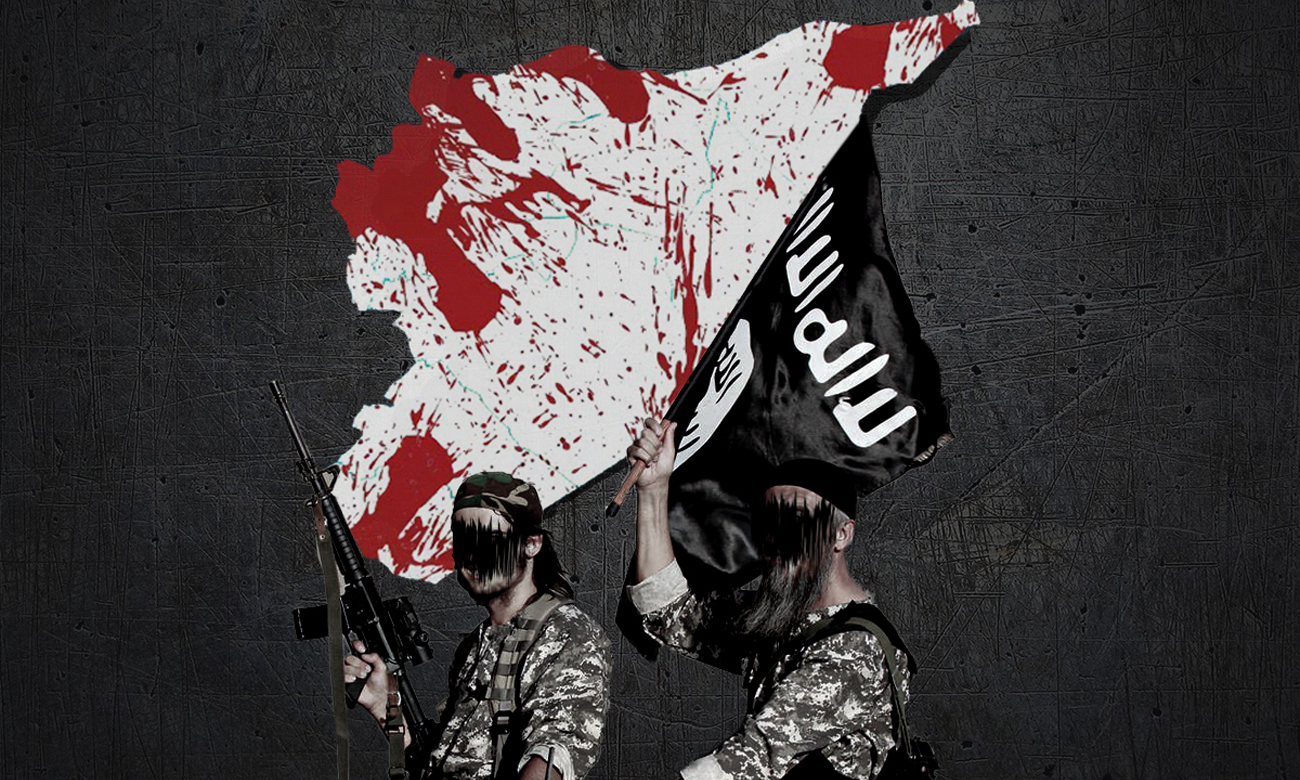
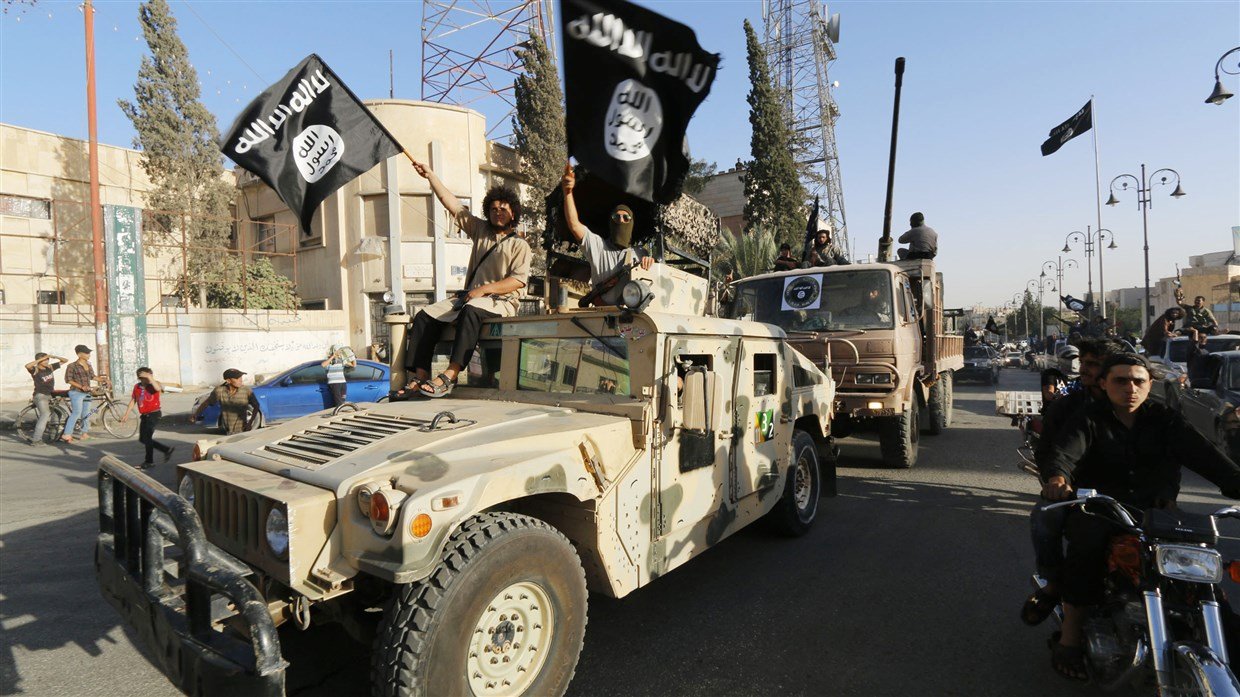
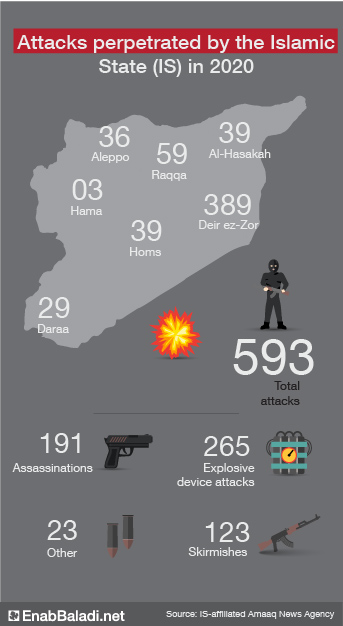
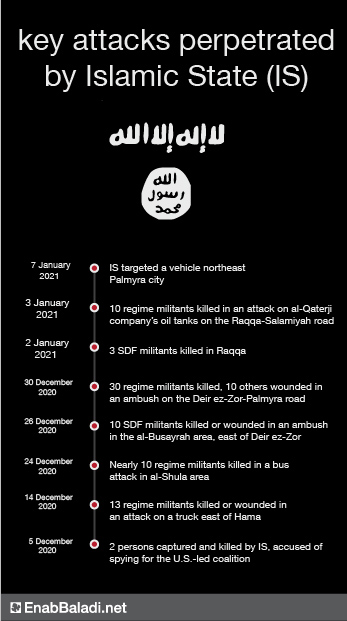
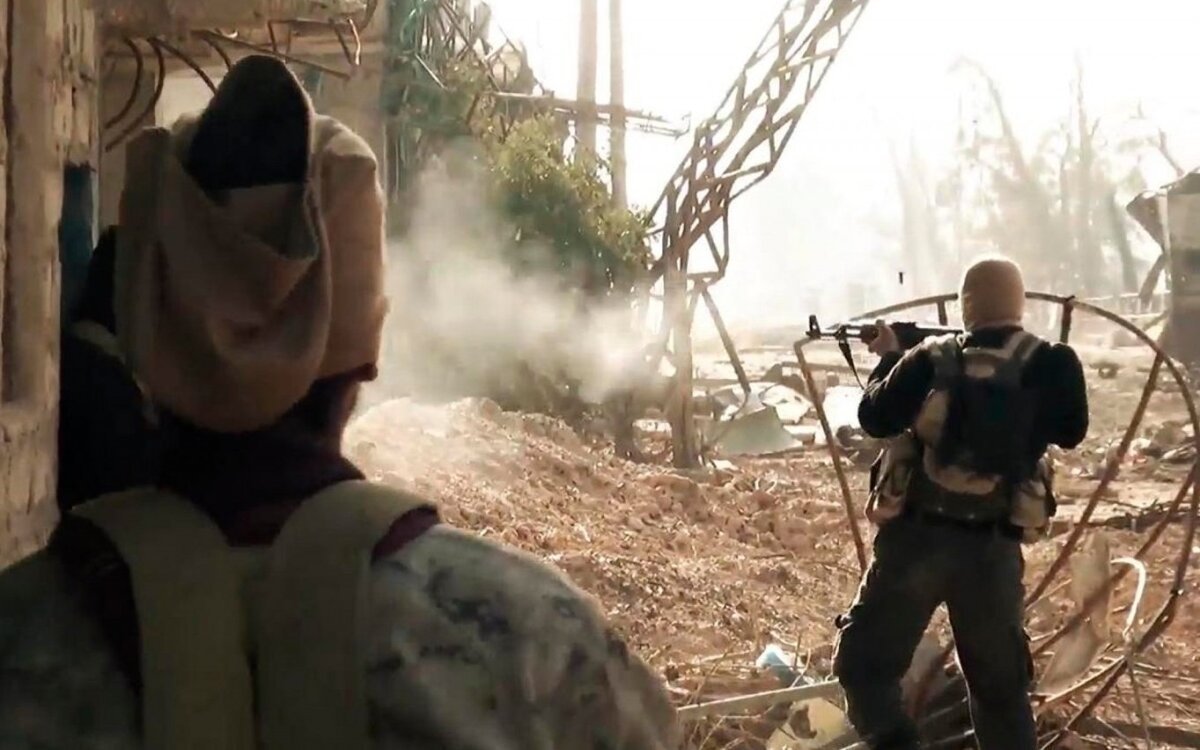
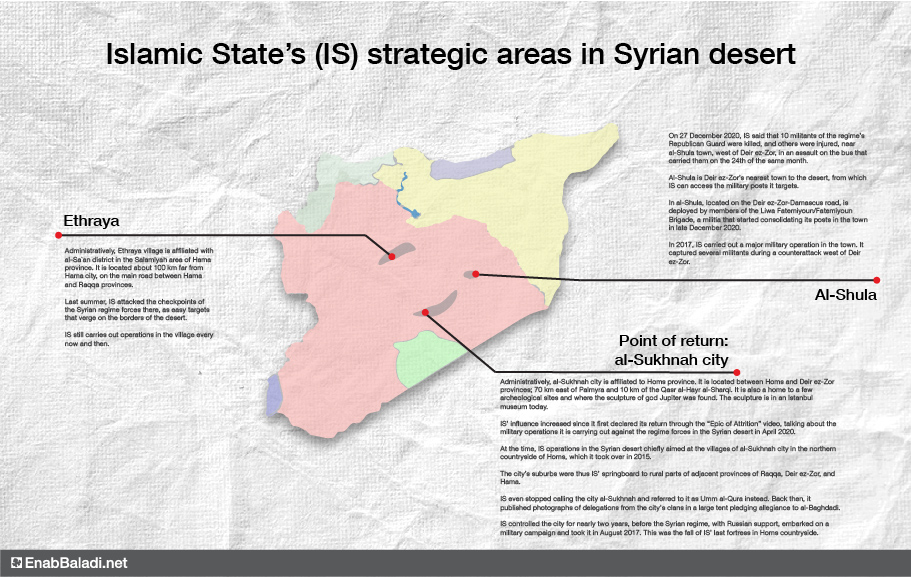
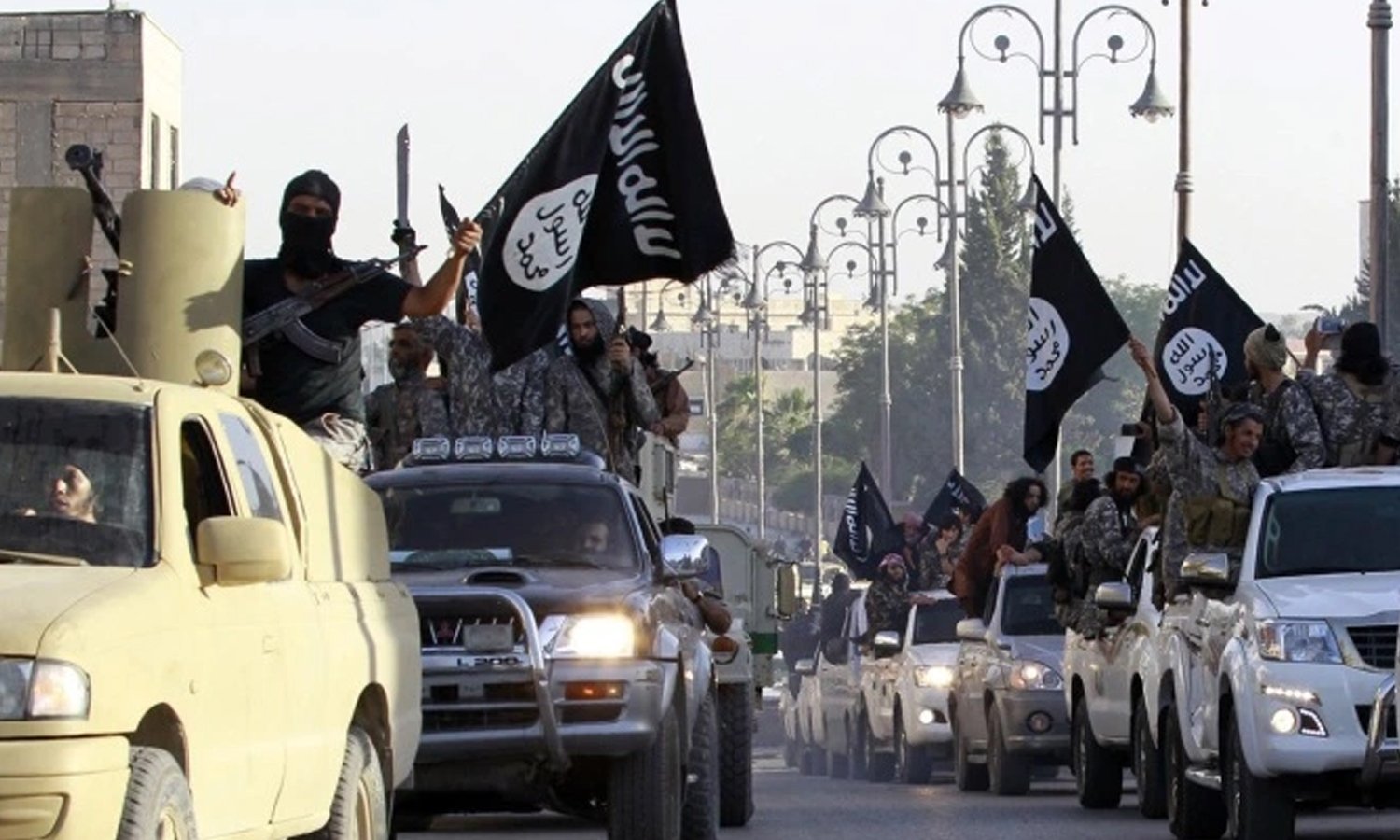
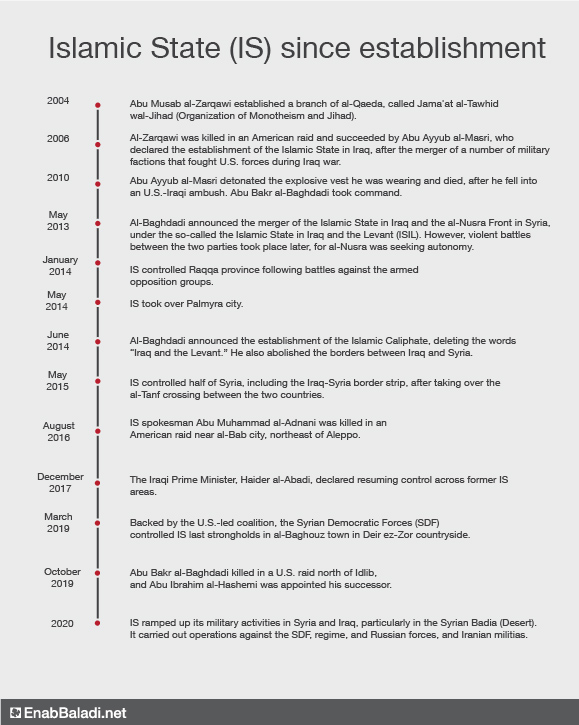





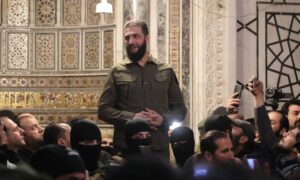
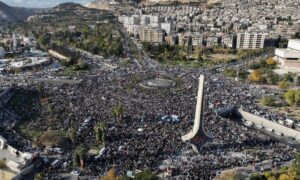
 More In-Depth
More In-Depth